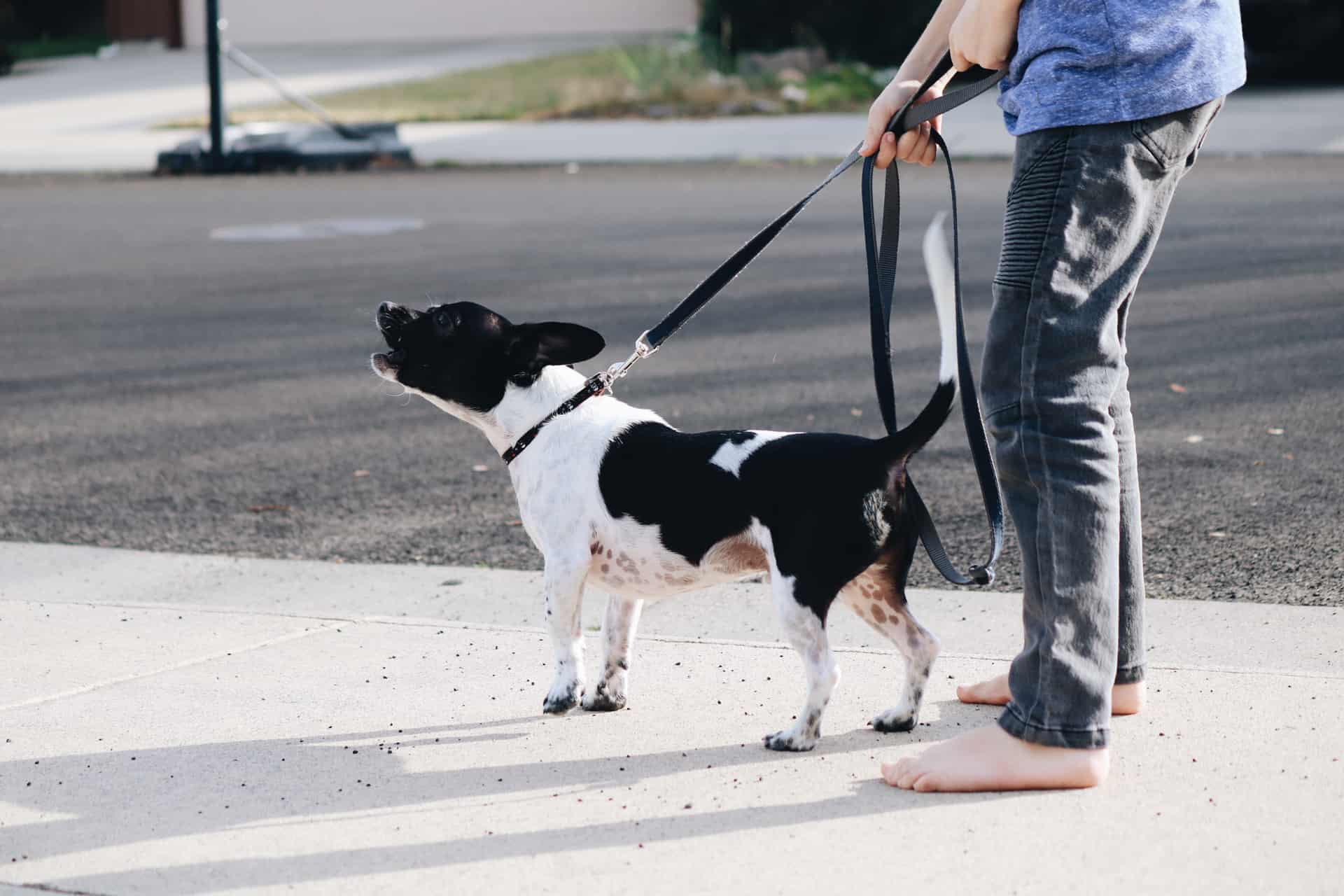Barking vs. Howling: What’s the Difference?
When it comes to dog vocalizations, two sounds stand out – barking and howling.
Barking is sharp, abrupt, and loud. It’s often used as a warning. Pitch and tone vary by breed, age, and mood. Too much barking can indicate boredom, anxiety, or aggression. Training can help reduce it.
Howling is a long sound that rises in volume. Wild canines use it to signal location or rally their pack. Domestic dogs may howl to certain sounds, like sirens. It can also signal anxiety or loneliness. Bonding exercises and anxiety-reducing training can help with excessive howling.
Understanding Barking
Dogs bark, and it’s a sound we can all recognize! Barking is a way for dogs to communicate. Depending on the type, different messages can be sent. To understand what your pup is trying to say, and spot any behavioral issues, it’s important to learn the difference between barking and howling. Let’s dive in and learn more about barking!
What is barking?
Dogs bark to communicate. It’s a series of sharp, short sounds, or sometimes a continuous noise. They bark for different reasons. For example, warning, danger, fear, play, anxiety, or even excitement. Barking is different from howling. Barking is usually faster, sharper and higher pitched. Whereas howling is a long, low sound that rises and falls in pitch. Wolves howl to communicate with their pack over a long distance.
If your dog barks a lot, they’re trying to tell you something. It’s essential to understand the message, so you can respond properly.
Why do dogs bark?
Dogs bark as a way to talk. The type of bark and the situation can show different meanings. It’s classified by length, pitch, and frequency. Excitement, fear, aggression or danger can be signaled this way.
What’s the difference between barking and howling? Barking is for communicating near by humans or other dogs, while howling is to make a long sound over a long distance. It can be because of loneliness, separation anxiety, alerting the pack, or to greet. Sounds like sirens, music, or singing can trigger howling too.
As a dog owner, it’s important to know the difference and understand what your pet is trying to say.
What do different bark types mean?
Bark types vary, each with its own emotion or intention. Fast, high-pitched bark? Fear or aggression. Slow, deep bark? Territory or warning. Whimper? Anxiety or hurt. Howl? Loneliness or wanting to chat with other dogs.
It’s essential to observe your pooch’s body language and other conduct to make sense of their barking. Plus, high-pitched or too much barking could be a sign of a health issue or behavioural issue. So, get help from a vet or pro dog trainer to address any worries.
Understanding Howling
Howling is an ancient way of talking between canines. It expresses many feelings, like distress, joy, sadness and alertness. Howls are loud and go far, which allows wolves and dogs to chat with each other even when they’re far apart. In this post, let’s find out more about howling and the difference between it and barking.
What is howling?
Howling is a type of vocalization used by some animals. It conveys information like location, rank and feelings like fear and loneliness.
It’s different to barking. Howling starts with a long note rising and falling in pitch. Barking is short and sharp. Plus, howling is louder and travels further. Barking is common in pets, but howling is more often heard in wild canids like wolves, foxes, and coyotes.
Knowing the differences between howling and barking helps pet owners better understand their pet’s behaviour and respond better.
Why do dogs howl?
Doggies howl for a variety of reasons. Emotions and talking to other pooches are two of them. Barking and howling are two different communication techniques used by dogs.
Here’s the diff: Barking is a warning or to grab attention, while howling is to talk from a distance. Barking is one or two syllables, while howling is longer and melodic. Certain breeds like huskies and beagles tend to howl more than bark. Knowing the differences can help you understand your pup better and communicate with them better.
What do different howl types mean?
Howling is a way for dogs and wolves to communicate. It can change its meaning depending on the tone, volume and length.
Long howls indicate loneliness or a response to other howling dogs.
Short howls show happiness, excitement or warn.
Series of howls mostly happen during mating season, so wolves can talk to each other. When there are shorter barks at the end, it’s a sign to rally or stop the hunt.
Howling is more instinctive than barking and can show more complex messages.
Differences Between Barking and Howling
Dogs bark and howl to communicate.
Most people don’t know the difference between the two. Barking is a quick, sharp sound used to get another dog or person’s attention. Howling is a much longer sound. It is used to talk from a distance. In this article, we explain the distinction between barking and howling.
Physical Differences
Barking and howling are two different kinds of vocalizations made by dogs.
Barking: The mouth is closed, and a sharp, quick noise is produced with their vocal cords. Some breeds make a deep bark, while others have a high-pitched one.
Howling: A wide-open mouth and a long, melodious sound, which rises and falls in pitch. This sound is created by air going through the vocal cords and resonating in the canine’s chest cavity.
Both are ways for dogs to communicate. Barking often signals territorial or protection behavior. Howling could be a way to call the pack, or a sign of anxiety or distress.
Contextual Differences
Barking and howling are two vocalizations that dogs use to communicate.
Barking is usually an alert, warning, or a protective mechanism. It can also be a form of social communication between dogs.
Howling is a long-range communication. It’s used to connect with other dogs or attract attention.
Understanding the contextual differences of barking and howling can help pet owners better understand their pet’s behavior. With this knowledge, they can develop more effective training and communication techniques.
Emotional Differences
Barking and howling are two ways for canines to communicate. Barking is more common and usually signals danger or alerting others. It can also show stress or anxiety. Dogs bark to show aggression or dominance. Other barks come from excitement, fear, or frustration.
Howling is used to communicate with other dogs over long distances. It usually expresses loneliness or boredom. It could also be caused by a stranger or a high-pitched noise. Howling may also mean contentment when dogs are sharing experiences in harmony.
Recognizing the emotional differences between barking and howling helps dog owners figure out their pup’s behavior and take the right steps. To prevent excessive barking, train your pup early, socialize them, and give them exercise and mental stimulation.
How to Control Barking
Barking and howling are two distinct sounds. Barking is to alert of an intruder or show territory, while howling is to communicate with the pack from a distance. Knowing how to control barking is essential for pet owners and their dogs. Let’s explore the differences between barking and howling and tips on controlling barking.
Identify the cause of excessive barking
Before trying to control your pup’s excessive barking, figure out the cause. Dogs bark to talk, but too much or wrong barking can mean boredom, anxiety, or territory. Causes to think about are:
- Lack of exercise/mental stimulation
- Separation anxiety
- Territorial behavior
- Fear or aggression
- Attention-seeking
When you’ve identified the cause, take action. This might mean giving them more exercise or mental stimulation, making the environment comfier and safer, or seeking professional help.
Remember, barking and howling are different. Barking is normally to express to people or animals around them, while howling is instinctual and linked to socializing and territory.
Teach your dog the “quiet” command
Barking and howling are two distinct methods of communication for dogs. Barking is often used to interact with humans, while howling is more common when connecting with other canines. It’s essential for pet owners to recognize the difference and learn how to control excessive barking to keep the peace.
Here’s an effective way to teach your pup the “quiet” command:
- Wait for them to start barking.
- Hold a treat near their nose to get their attention.
- Say “quiet” or “shh” in a firm voice.
- Reward them with the treat once they stop barking.
- Repeat the process and incrementally use the command without the treat.
Pro tip: Consistency is essential when teaching your dog the “quiet” command. Practice in various scenarios and reward them for good conduct.
Try positive reinforcement techniques
Positive reinforcement is an effective way to control barking in dogs. It involves rewarding desired behavior to make it stronger over time. Here is how to do it:
- Identify the trigger of barking. It could be strangers, other animals, or noises.
- When your pup isn’t barking, give them a treat or praise.
- Train them to “speak” and “quiet” on command.
- When your pup is barking, say “quiet” and wait for them to stop. Then, praise them and offer a treat.
- Be consistent with rewards and training.
Barking is a harsh vocalization used in alarms, territorial protection, and communication. Howling is a prolonged sound that dogs use to communicate with other animals.
How to Control Howling
Dogs make a special sound called howling. It’s longer than barking and has a varied pitch. It can get noisy if not supervised. Let’s learn how to control it.
Identify the cause of excessive howling
Excessive howling in dogs can be a sign of distress. Identifying the cause is the first step to getting it under control. Here are some common causes:
- Loneliness and boredom.
- Injury or illness.
- Anxiety or fear.
- Territorial behavior.
- Certain medical conditions.
Once the cause is identified, addressing the root cause can help reduce or eliminate the problem. Exercise, mental stimulation, socializing with others, and a consistent routine may help with loneliness and boredom. Injuries or illnesses should be treated by a vet. Behavior modification may be necessary to address anxiety and territorial behavior.
Remember that barking and howling are different. Barking can be trained out, but howling is natural for some breeds.
For help managing excessive howling, consult a professional dog trainer or animal behaviorist.
Create a calm and controlled environment
To stop howling in dogs, having a peaceful & organized atmosphere is vital. Here’s a few ways to get there:
- Set up a routine. It’ll help your pup adjust to the schedule and anticipate what’s coming.
- Give them enough exercise. Too much barking could mean they’re bored.
- Avoid triggers. Loud music, sirens, or other dogs barking could be the culprits.
- Praise & reward when they don’t howl.
- Distinguish between howling & barking. Howling is a form of communication, while barking might be out of fear or anger. Knowing the difference can help you sort out the cause.
By following these steps, you can create a more serene setting for your pup & reduce the amount of howling.
Talk to your vet about medication options.
If your pup is howling too much, there may be an underlying issue. Separation anxiety, boredom, or loneliness could be to blame. To address it, chat with the vet about medication options. Anti-depressants or anti-anxiety meds may help reduce howling and stress.
Remember, meds should be used in combination with obedience training and environmental enrichment activities. This will benefit both you and your furry pal.
Frequently Asked Questions
Q: What is the difference between barking and howling?
A: Barking is a short, sharp sound made by dogs. Howling, on the other hand, is a long, drawn-out sound made by wolves or dogs.
Q: Why do dogs bark?
A: Dogs bark for a variety of reasons, including to communicate with others, express excitement, respond to a perceived threat, or seek attention.
Q: Why do wolves howl?
A: Wolves howl to communicate with other members of their pack, establish their territory, and maintain contact over long distances.
Q: Can dogs howl?
A: Yes, dogs can howl, but they typically do so less frequently than wolves. Many dog breeds have a natural tendency to howl, such as huskies, beagles, and bloodhounds.
Q: Do barks and howls convey different meanings?
A: Yes, barks and howls can convey different meanings depending on the context. Barks can indicate a dog’s emotional state and intention, while howls are usually used to communicate specific messages within a pack.
Q: Can barking and howling be trained out of a dog?
A: Yes, barking and howling can be trained out of a dog to some extent, but it depends on the reason for the behavior and the individual dog’s personality. Training methods may include positive reinforcement techniques or desensitization exercises.







